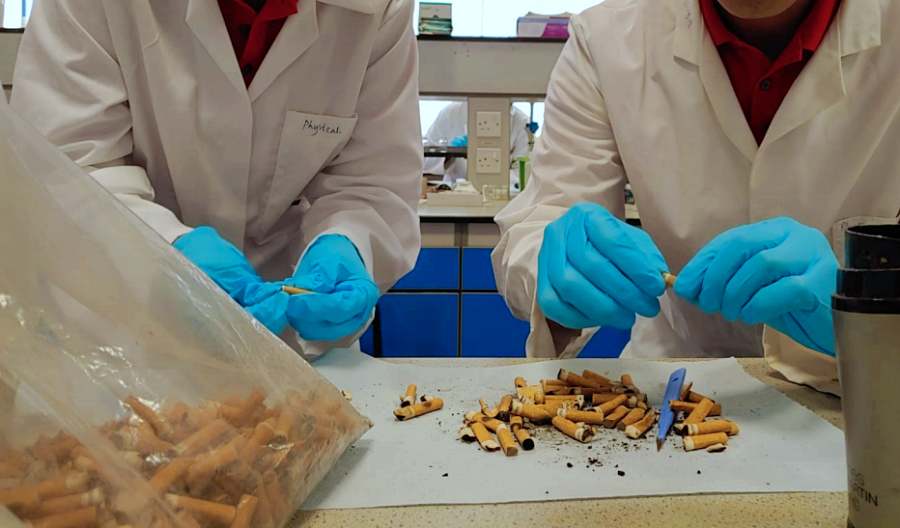Sat 30 December 2023:
Global scientists are working to find practical, renewable, and environmentally friendly energy alternatives while also investigating new, cutting-edge strategies to lessen our reliance on harmful, non-renewable energy sources.
Biodiesel, which is produced from biological materials like edible and non-edible oils, animal fats, and leftover restaurant grease, is one such clean fuel source. Biodiesel is a considerably cleaner, more environmentally friendly energy source because it is both renewable and biodegradable.
The largest obstacle to biodiesel’s widespread adoption, nonetheless, continues to be its high cost. The solution to this problem has now been found: cigarette butts.
Previous studies have shown that adding additives like triglyceride triacetin leads to increased efficiency of biodiesel in the form of decreased air pollution and enhanced combustibility.
However producing triacetin is highly hazardous to the environment, which requires the use of a lot of chemicals and generates excessive toxic waste.
Scientists from Kaunus University of Technology (KTU), Lithuania, in collaboration with the Lithuanian Energy Institute, have developed a way to produce triacetin using cigarette butts, according to research published last month in the Journal of Analytical and Applied Pyrolysis.
“In our research group, we are working on the topics of recycling and waste management, therefore we are always looking for the waste, which is present in huge amounts and has a unique structure,” said Samy Yousef, lead and corresponding author of the study.
“Cigarettes are made of three components – tobacco, paper and a filter made of cellulose acetate fibers – and are a good source of raw materials and energy. Plus, cigarette butts are easy to collect as there are many systems and companies for collecting this waste in place,” he added.
Scientists used pyrolysis to thermally decompose the butts at temperatures of 650, 700 and 750°C.
After conducting several experiments, the experts realised that the maximum amount of triacetin compound (43 per cent) was extracted at 750°C, with yields estimated at 38 wt per cent oil, 25.7 wt per cent char, and 36.4 wt per cent gas.
“All the products have real applications,” Yousef said.
“Char, which, in our case, is porous and very rich in calcium, can be used for fertilisers or wastewater treatment as an absorbent and energy storage. Gas can be used for energy purposes. Last but not least is oil, rich in triacetin, which can be used as an additive to biodiesel to reduce the cost,” he added.
SOURCE: INDEPENDENT PRESS AND NEWS AGENCIES
______________________________________________________________
FOLLOW INDEPENDENT PRESS:
WhatsApp CHANNEL
https://whatsapp.com/channel/0029VaAtNxX8fewmiFmN7N22
![]()
TWITTER (CLICK HERE)
https://twitter.com/IpIndependent
FACEBOOK (CLICK HERE)
https://web.facebook.com/ipindependent
Think your friends would be interested? Share this story!





